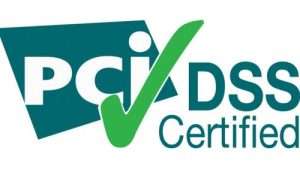Common Website Redesign Mistakes & How to do it right, increase Traffic and make more Sales

Either you’re monetizing your content or selling on your site, there comes time you should redesign your site for better navigation, make it more professional, catchy and meet up with modern site architecture and design technology.
Your online presence is the only means that your potential customers have in getting to you, so when it comes to redesigning your website it has to be on point.
Make sure you outsource reputable site design company, work with them on your strategy and business, get examples of their past works before starting the whole process and paying for their services.
Many experts believe that businesses should look to update their website at least every two to three years, due to the rate that technology changes.
What may have worked a couple of years ago may well be outdated and, with the competition making full use of today’s capabilities, leave you being left behind.
However, that certainly doesn’t mean rushing your site’s redesign – especially if this will be your first major overhaul.
Rushing the site’s redesign process
Do not rush the redesign of your website as this can have potentially catastrophic effects on your online visibility. Any visibility that your website may have will be the result of your website’s SEO, largely made up of user experience.
Should this be impeded in any way, you can expect your website’s visibility to suffer the consequences.
This is an easy trap to fall into, especially if you are carrying out an overhaul of your site due to deteriorating results. A redesign takes time to do right, and it’s not just a case of making the website look pretty.
Overlooking page Redirects and Content on your Website
Does your website feature 404 errors and/or pages with little to no content? If so, you must ensure that these are in place on the new website before going live.
There will always be minor teething issues; these are to be expected, but things such as redirects and lack of content as well within our power.
New pages with little to no content do nothing for the user and search engines are not going to rank them, having a negative effect on your website’s SEO.
Be careful that any new page isn’t in direct competition for any of your other pages when trying to rank for a specific keyword. You run the risk of Google considering your pages to add no actual value to what is already offered, rendering it pointless.
Cheap Content management Software (CMS)
Never, ever, try and redesign your website on the cheap. What comes first in the mind of small business owners having online presence is the ‘average cost of web design’.
While there’s no straight answer to how much you should pay for a web redesign, an extremely cheap price is low for a reason and a price tag above average is likewise for some reasons.
The simple, and truthful, rule of thumb is that you get what you pay for. A professional web designer will not be able to produce an exceptional website with a one-week deadline and a budget that barely scrapes the bottom of the barrel.
You have to be prepared to pay and wait for your website if you know what is good for you.
The biggest mistake that business owners can make is not actually something that is visible on the website itself, but something that is used every day. A cheap and nasty CMS can be the downfall of your website.
If it doesn’t work as intended, is ridiculously complex and has a tendency to break, get rid of it.
For small business owners, you won’t go far wrong with a WordPress solution. Alternatively, you can invest in a bespoke content management system that can be created for your business’s own requirements – this might be something to look into if you are dealing in a specialist area.
Making too Many Changes on the Website
Our final key all-too-frequent mistake is to constantly be making changes to your website. Continuity is an important feature for your customers and, if your website is different every time they visit, they will soon look for other options.
Striking the right balance between keeping your website updated and not overdoing it is important. It can often be a fine line but, if you find yourself changing the site every other month, that is too much.







